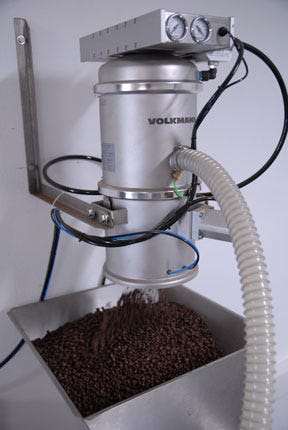One of the pure joys of working as a food engineer in the bakery industry is that I get invited to tour bakeries of all sizes and see the differences and similarities from one operation to the next. It might be a surprise for some to learn that small, independent retail bakeries, large wholesale bakeries, in-store supermarket bakeries, and the food manufacturing giants of the industry all struggle with many of the same challenges, just on a different scale.
The pastry chef who owns a bakery needs to achieve consistent, high product quality, operate efficiently at high throughputs, maintain proper hygiene, prevent contamination, and respond quickly to changing consumer tastes to keep customers coming back for more. Yet the director of bakery operations for a global restaurant or supermarket chain faces the very same challenges, multiplied across hundreds of stores or facilities. For a big company, this means the cost of any inefficiencies is multiplied accordingly. And when the operation runs at peak efficiency, profitability is multiplied accordingly.
The greatest challenge for everyone today may be finding the right people to run a bakery operation day in and day out. Given the labor-intensive nature of baking and the high level of dedication required to consistently produce top quality baked goods, attracting and keeping reliable employees is especially difficult.
The cost and time involved in hiring, training, and handling constant employee turnover, plus increasingly costly worker safety issues, have grown substantially along with input costs, while the consumer’s willingness and ability to pay more for bread, cookies, cakes, and other baked goods has hit a ceiling. If a decline in consumer spending is capping revenue growth, then bakeries need to pay closer attention to controlling costs and to boosting production efficiency to survive and to operate at a profit.
In many bakeries today, the solution to this situation comes from automation. For retail bakeries, the latest automated ovens, for example, store recipes for every type of product in the catalog to enable unskilled, entry-level staffers to produce perfect baked goods every time at the press of a button. For multi-national giants, multi-million-dollar production lines run automatically and virtually unattended, 24/7.
Every step in the baking process, from unloading bulk bags of flour to bagging baguettes for delivery, is automated. Not every bakery owner is in a position to automate the entire operation, but every bakery owner is in a position to consider automating the key steps that create the most glaring safety hazards and production inefficiencies. These steps involve transferring ingredients from storage into production.
A Recent History of Manual Ingredient Handling
Think about how this gets done today in a typical bakery. A worker has to pick up a heavy bag of flour, sugar, salt, or other ingredients, carry it to a mixer, cut the bag, and empty it into the mixer. This often creates a cloud of dust, leaving the worker covered in fine powder and standing amid a powdery mess on the floor. This manual process gets repeated with successive ingredients, day and night. It demands constant cleanup, invites cuts to the hands, and causes bakers to suffer from back injuries due to heavy lifting and respiratory issues from inhaling the dust particles. If not for the love of baking, would this work environment really make people eager to show up every day when they could find far easier jobs for similar pay?
Or, instead, the same worker can press a button, walk away, and check on other tasks as the flour is automatically whisked from storage directly into the mixer. No one has to pick up and carry heavy bags, no billowing clouds of dust to create an explosive disaster, no risk of slipping on powder covering the floor, and this conveyor moves ingredients faster than any employee - nonstop.
When I recently saw this automated ingredient handling system in action, it seemed like an obvious opportunity for bakeries to modernize their operations and become less dependent on manual labor. The conveying system is designed and manufactured by the family-owned company, Volkmann, in Soest, Germany, and is offered in the Americas by Volkmann USA (volkmannusa.com).
Volkmann developed its proprietary vacuum technology in 1973 and has installed thousands of these conveyors in food, chemical, pharmaceutical, and other plants worldwide, as well as in several of the largest commercial bakeries in the world.
The flagship system is called the Volkmann VS pneumatic vacuum conveyor. This system has no moving parts to wear out or maintain, uses no electricity, and earned the ATEX certification as explosion-proof by design. It uses a vacuum pump powered by compressed air to generate vacuum suction that gently conveys chips, berries, nuts, and powdered ingredients like wheat flour, fine confectioner’s sugar and coarse salt from one point to another through enclosed tubes or hose, without degradation or breakage.
Coffee being transferred via the pneumatic vacuum conveyor
In a high-volume operation, thousands of pounds of flour, for example, are automatically emptied from a bulk bag using Volkmann’s companion bulk bag unloader and loaded into the conveyor through a sealed connection, then transferred directly into a mixer or to another location. Depending on the recipe, the ingredients may be discharged from the conveyor into the company’s companion vibrating feeder dosing system, which then weighs and meters the ingredients into the mixer in precise amounts automatically.
In a lower volume operation where 25- or 50-pound bags of flour are used instead of bulk bags and sacks, a companion Rip-and-Tip bag dumping station is used to aid in ingredient transfer to the conveying line. After a worker empties the flour into the hopper, the flour is transferred through the conveyor to the mixer, vibrating feeder, or other location. Or, as another option, a worker can transfer ingredients directly from an open bag or bin via suction lance connected to the conveyor that looks and operates very much like a traditional hand-held vacuum.
A variety of accessories can be fitted to the conveyor system to suit the specific conditions of the operation or the recipe, such as a lump breaker to remove any lumps that may have formed while the powder was sitting in storage. This helps ensure every batch shares a consistent particle size for repeatable results, regardless of which worker manages the process.
This conveyor concept provides a sanitary, contained ingredient transfer solution that seals the ingredients safely inside the conveying system throughout the process to guard against contamination and maintain purity while also preventing any spillage or dust release into the work environment. Stainless steel construction is included as standard. By contrast, belt conveyors, bucket elevators, and other open-air conveyors invite product contamination and allow powders and other dust particles to collect on the floor, cloud the air, and create a constant combustible dust hazard.
Bakeries Need Versatile Equipment for Product Flexibility
Since today’s bakeries often need to produce a wide product line and switch quickly from bagels to donuts to artisan bread and back, for example, it was interesting to see how this automated conveying system handles product changeovers. The same conveying system can be used to transfer flour, then sugar, then frozen berries, then chunky chocolate breakup, then a mixture of nuts and seeds in a precise ratio.
Its suction power can be adjusted on the fly based on the material properties and target throughput, and the vacuum pump and filter module may be set on a portable trolley for movement from one area of the bakery to another area.
Food manufacturers commonly switch ingredients between batches several times per day using the same pneumatic vacuum conveyor. When cleaning is needed, depending on the level of cleanliness and cross-contamination control required, the conveyor may be disassembled without tools, cleaned, and returned to service in a matter of minutes.
How Affordable Is Automated Conveying?
I checked with Volkmann about pricing to see how realistic it might be for bakeries of various sizes to automate the upstream portion of the production process. For a wholesale, retail, or in-store bakery interested in increasing production and limiting potential dust and ergonomic safety hazards without relying on additional staff, the company’s entry level, automated ingredient handling system comprising both the pneumatic vacuum conveyor and RNT bag dumping station, offers an initial cost of approximately $55,000.00.
For large and growing operations, the cost of automating ingredient handling seems insignificant when compared to the investment required in mixers, ovens, proofing cabinets, and other capital equipment, and when compared to the improvements to be gained in efficiency, throughput and safety.
Lastly, while most bakery equipment often needs professional installation help, these automated ingredient handling systems can often be installed by in-house bakery staff and operated within a few hours.
👉 Thanks for reading!
Bakery Industry Insider in collaboration with Volkmann USA
For more information, see Volkmann USA at
or call 609.265.0101, contact@volkmannusa.com.











